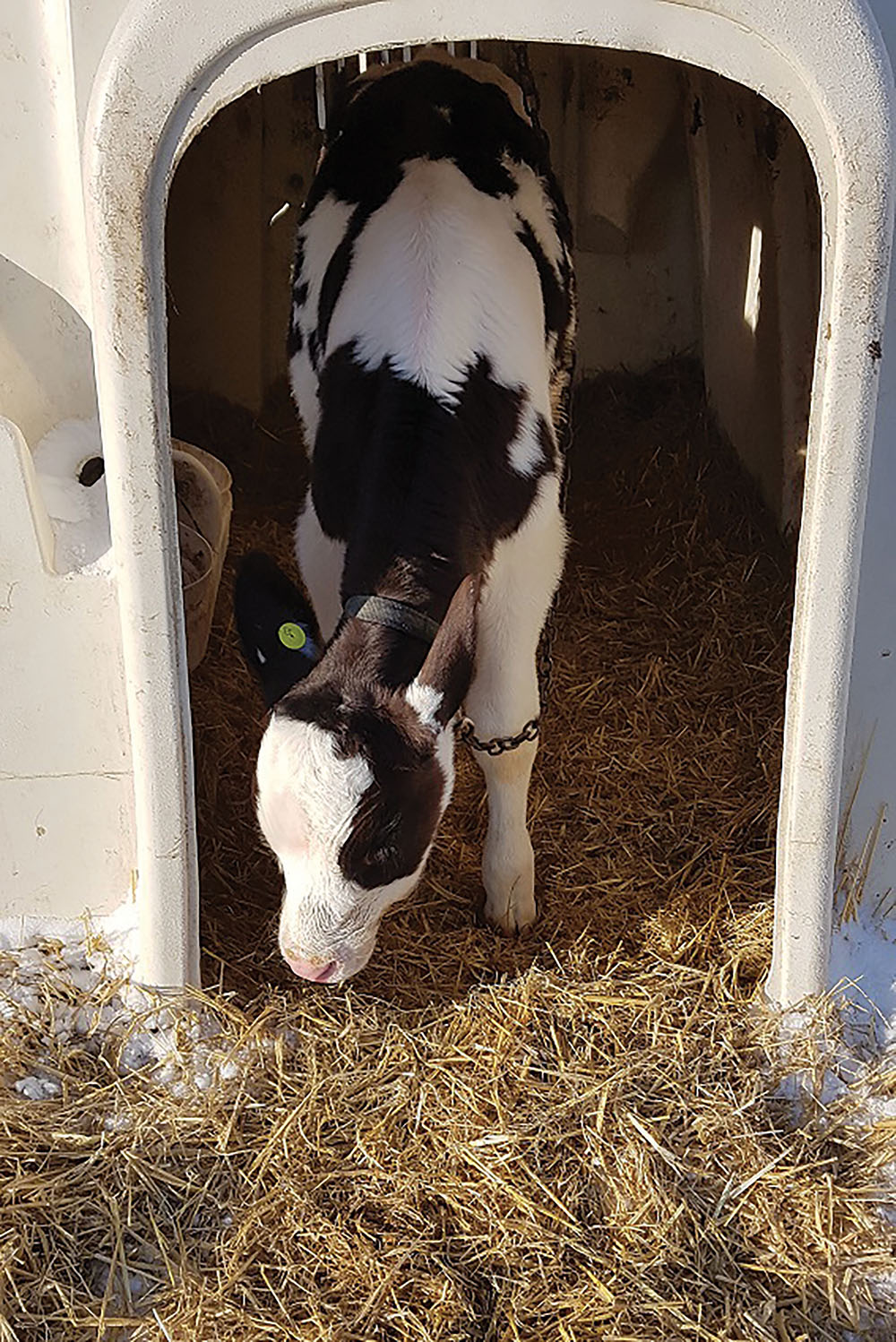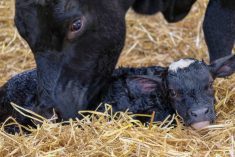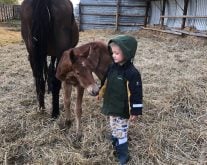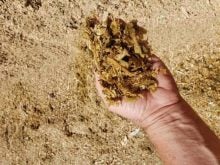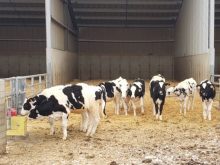Despite the trend to build heated barns to raise young stock, there are still lots of outside hutches and cold barns to feed pre-weaned dairy calves. Many of these calves are raised solely on commercial milk replacer. As a dairy nutritionist, I review many of these milk replacer-feeding programs and make the necessary changes to assure that vital energy requirements are met, while compensating for cold winter weather.
This means I recommend feeding more milk replacer to compensate for increased energy requirements during cold weather, so growth of the calf doesn’t suffer. A general rule I use: feed a 20 per cent fat milk replacer and increase its amount by two per cent for every degree the temperature falls below 5 C.
Read Also

Harvest wraps up and fall work begins
At the Eppich famly ranch in western Saskatchewan, the fall harvest was successful with few breakdowns, cows and calves have been sorted and a new tractor has arrived
An illustration of this recommendation (original source: NRC, 2001) is in the accompanying table further down.
For example, a 50-kg pre-weaned (under three weeks of age) calf needs a total of about 14 megajoule (MJ) of energy to stay alive and support modest growth performance. It will need about 700-800 grams of milk replacer powder daily. That works out to about 5.5-6.0 litres of milk replacer solution, reconstituted at the rate of 125-130 g/litre of solution (same as whole milk). Given a typical cold day of -10 C, this calf would need a total amount of eight to nine litres of milk replacer solution to stay alive and warm.
Feed 3X if necessary
Since this daily volume of liquid might constitute a belly-full for some of the younger dairy calves fed in two meals, a third feeding might be necessary to assure that calves drink enough milk replacer, yet prevent bloat and scours.
Although milk-fed baby calves younger than three weeks do not pick up or digest energy-containing dry calf starter, I think that it is a good idea to set out a small meal at two weeks of age. They will nibble at it at first, but eventually will voluntarily eat more of this dry feed as time goes on. It has been shown at least one to two litres of extra fresh water per animal should be provided separately to milk replacer feedings. This practice encourages young and older ones alike to either accept or consume more of the dry feed.

For this milk replacer and latter calf starter to be of value, young calves need to be fed in comfortable housing. This means that common plastic hutches should be in good condition to house calves and placed facing south exposure for more sunlight and less crosswind. Next, more clean and dry straw bedding should be provided as insulation. There should be at least enough straw so the calves’ feet cannot be seen when they stand up. Afterwards throughout the winter, dairy calf hutches or shelters should be cleaned, with dirty and wet straw removed and replaced with fresh straw.
In the last few years, calf blankets have been used in conjunction with adequate straw bedding. They are essentially a body-fitted coat for dairy calves, usually made of insulated fabric, and which help reduce heat (energy) loss. The blankets should keep the calf warmer and drier, particularly when they lie on damp straw.
Despite my best advice as a dairy nutritionist, there is a point, when no matter how much feed, straw or blankets are used, that the weather becomes too cold for outdoor calves to survive.
A few winters ago, I got a call from a dairy producer who fed about 10 litres of milk replacer per calf to calves that were well-bedded with lots of straw in outdoor hutches, placed near the shelter of a row of trees. Out of 15 calves, four had perished during a recent night of -35 C with a windchill factor of -52 C. After some discussion, he came up with his own corrective action by which he moved them into a garage with some supplemental electric heat.
While that was an extreme situation, most baby calves raised outside in hutches or cold barns can do well during the winter. However, pre-weaned calves must rely upon a good milk replacer-feeding program, which provides enough dietary winter energy. It should not only prevent them from shivering but allow them to remain healthy and continue to grow.


